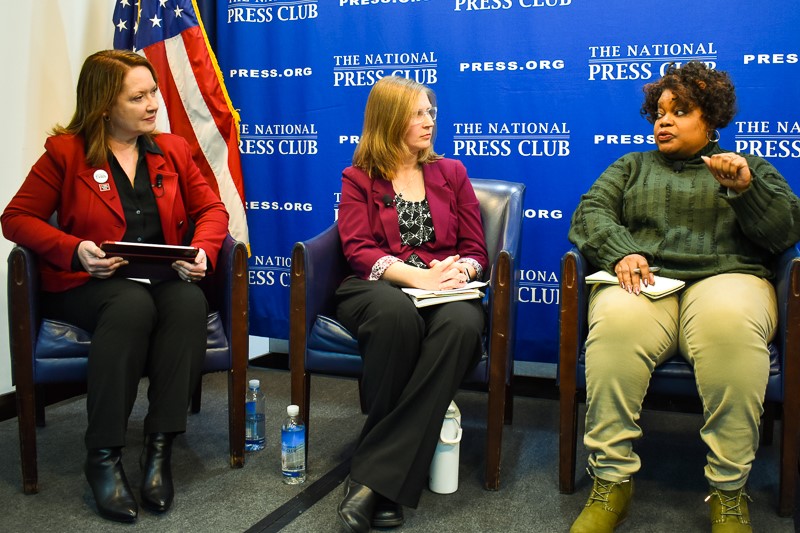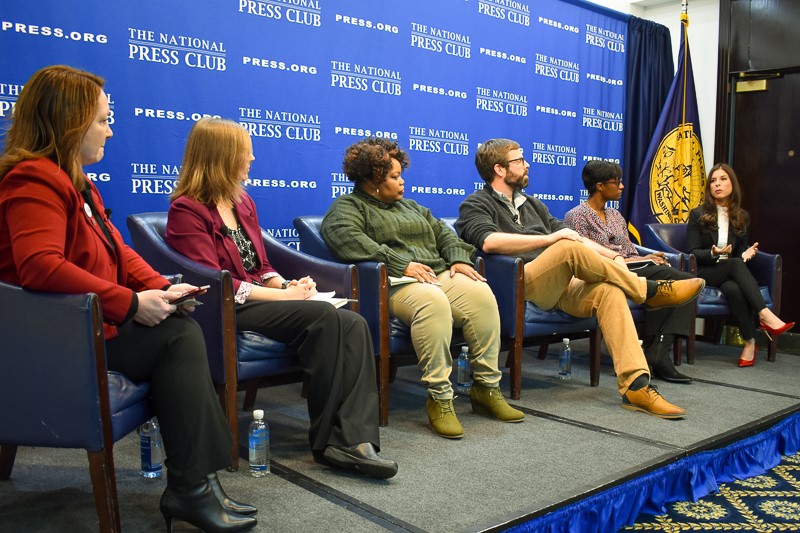New funding models support innovative efforts to reduce news deserts
Despite the growth of news deserts, the emergence of alternative funding models mean it is an “exciting” time for newsroom startups, panelists said during a Jan. 17 event at the National Press Club.
The founding of nonprofit news organizations across the United States and the growth in philanthropic support for newsrooms has helped address the closure of traditional newspapers that has left some areas of the country without local news outlets.
Although news deserts are a major concern, they have created opportunities, too, media leaders told the Club audience.

Courtney Lewis, chief of growth programs at the Institute for Nonprofit News, which has over 425 nonprofit news organizations in its network, said she saw a “huge spike” in new local newsrooms from 2017 to 2022. On average, a new newsroom opened every month during that time, with those new models making for “exciting” opportunities.
“It’s not just the fact that people are starting up and replacing what was lost,” Lewis said. “It’s that they’re innovating and creating new models and new ways of serving their community with news and information.”
The news industry has experienced several dramatic shifts in the last few years, said Axios’ senior media reporter Sara Fischer. As advertising revenue fell, some organizations leaned into subscriptions.
But enthusiasm for that subscription model has subsided, while revenue through memberships and donations has surged, especially as having nonprofit status means organizations can solicit those donations.
Philanthropy in news has changed, as fewer billionaires step in to buy entire companies. Now, Fischer said, there appears to be more local philanthropists who pay into funds to help support local newsrooms, like in Cleveland and Houston. That is a “healthier model,” Fischer said, as it does not rely on the largesse of one person.
Meanwhile, how people consume news has helped create new forms of journalism.

Tracie Powell, founder of The Pivot Fund and the founding fund manager of the Racial Equity in Journalism Fund, which help fund early-stage newsrooms, cited ATLSCOOP in Atlanta as an example of what can work. That outlet, which started as a social media site, now has over 1 million followers on Instagram and now does original reporting.
“As we see the traditional news model collapse, you do have others coming up,” Powell said. “But the even better news is, they weren’t just born. This is an evolution that’s been happening for a number of years.”
Traditionally marginalized communities are also benefiting.
Amy Kovac-Ashley, executive director of the Tiny News Collective, which supports news founders and those who have been historically excluded from media and media ownership, said these new outlets provide “an opportunity to start serving those communities from the ground up.”
Kovac-Ashley said while there is plenty of negative news about the growth of news deserts, there are plenty of bright spots that just need financial backing. It is part of a natural evolution, she said, in how people consume their news.
“We have to fund — and I would add support — the new, because the new is what’s going to be a legacy news organization 20 or 30 years from now, and we need them,” Kovac-Ashley said.
